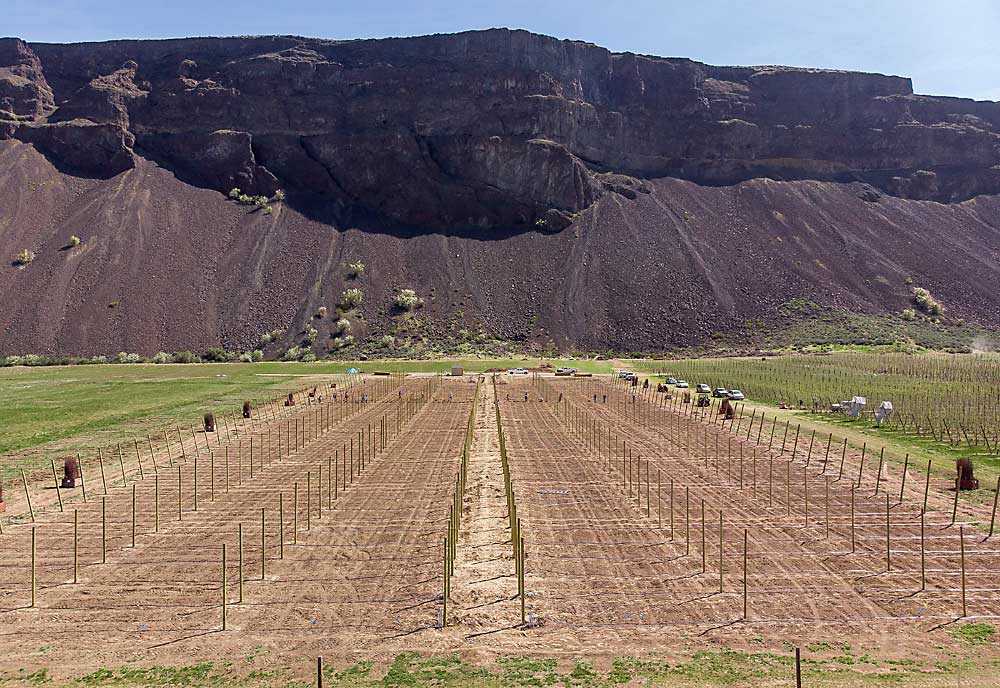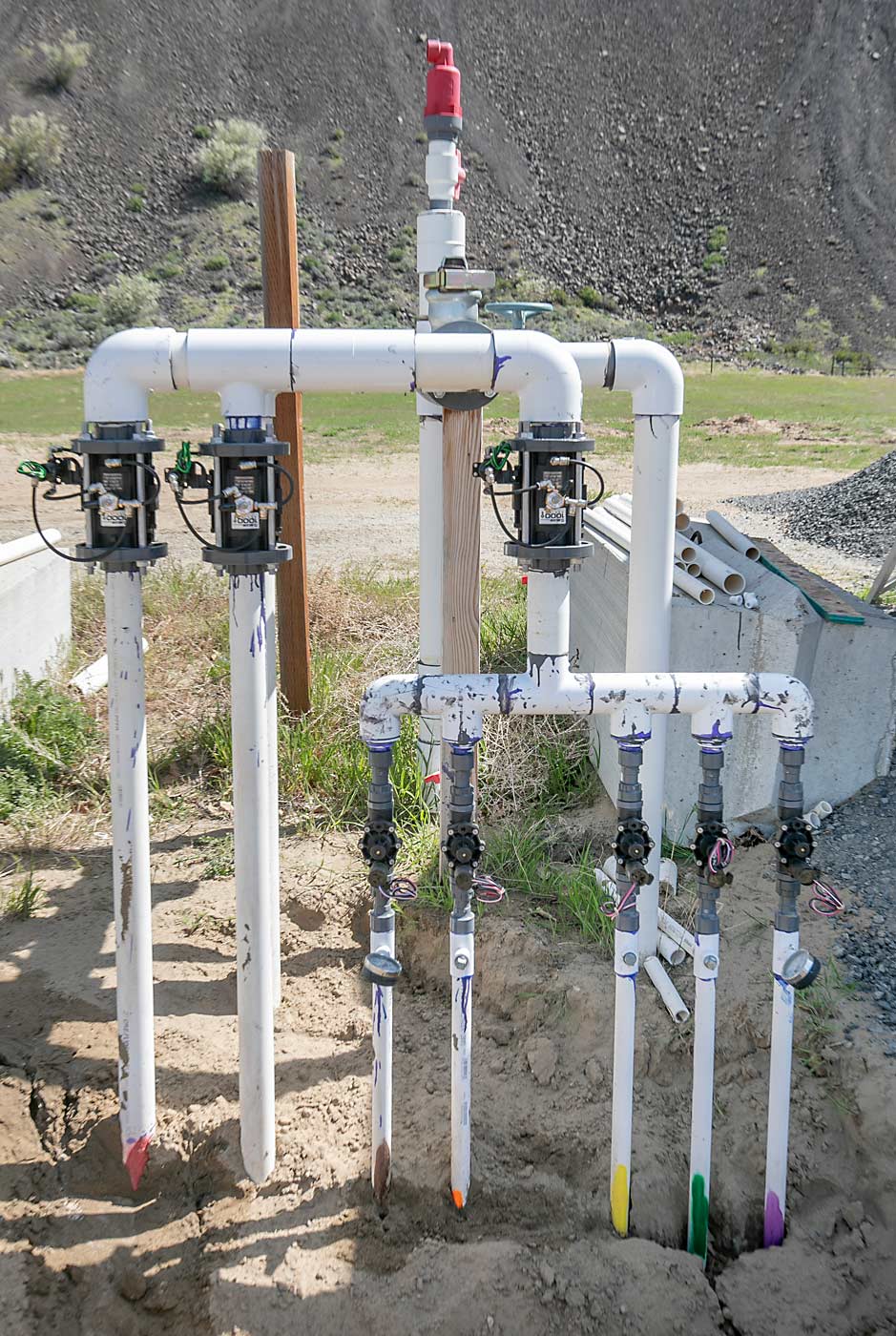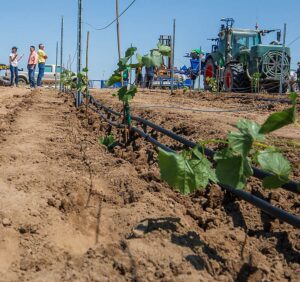
Optimizing Honeycrisp fruit quality requires dialing in everything from pruning practices to nutrition.
A new trial funded by the Washington Soil Health Initiative aims to see how improving soil health management can help growers reduce bitter pit and other disorders related to nutrition, vigor and stress. The 2.5 acres of Honeycrisp planted this spring mark the first phase of the tree-fruit-focused long-term agroecological research and extension (LTARE) site located at Washington State University’s Sunrise Research Farm near Wenatchee.
As the LTARE nomenclature makes clear, teasing out how management practices — such as adding mulch or compost amendments — impact fruit quality, orchard variability and resilience to environmental stress takes time. Similar sites are being planted for other leading Washington crops, including vineyards, potatoes, diversified organic systems with livestock and dryland crop systems with livestock — all with the vision of supporting research for decades to come.
“Short-term experiments are insufficient because organic matter can take 10 years or more to make substantial change,” said Tianna DuPont, a WSU Extension specialist and principal investigator on the project.
The tree fruit LTARE will eventually include three trial blocks, funded with $826,000 for the first five years by the state Legislature. A Gala block planned for 2024 will focus on replant disease mitigation, and a cherry block will be planted in 2025.

Each planting will encompass 2.5 acres, significantly larger than an average research trial, DuPont said. The size supports multiple three-row replicates for each soil health treatment, which will allow researchers to layer additional experiments over the long-term soil health studies without compromising them.
“For example, Dr. Somera is interested in mycorrhizal fungi and Dr. Waite is interested in root dynamics and is planning to put in many rhizotrons to track root growth and architecture over time,” she said, referring to project collaborators Tracey Somera and Jessica Waite, both with the U.S. Department of Agriculture’s Agricultural Research Service.
An industry advisory committee also formed to support the project. They recommended the rootstock options for the Honeycrisp trial, selecting G.241 to be well-suited for the site’s sandy soils and able to promote balanced nutrient uptake.
The four treatments are:
1) Grower standard: This treatment consists of standard weed management and nutrition based on soil test results, using 100 pounds per acre of nitrogen applied over 12 applications and foliar micronutrients.
2) Mulch: This treatment will apply a 2- to 3-inch layer of chipped apple wood mulch (heat-treated to reduce potential for pathogens) every three years with standard herbicide and nutrition programs.
3) Integrated organic: This treatment received compost before planting, and the grass drive rows will be mowed and blown into the tree row. Starting in the third year, weed control will switch from herbicides to cultivation and organic nutrient sources, including forage pea cover crops being used instead of synthetics.
4) High carbon: This treatment combines the compost application and mow-and-blow management found in Treatment 3 to provide a steady source of carbon, but weed management and nutrition are similar to the grower standard.
“We hypothesize that the mulch treatment will reduce environmental stress: keeping water availability more consistent and soil temperatures lower, resulting in increased tree growth, yield and, most importantly, fruit quality,” DuPont said.
Meanwhile, she expects the high-carbon and organic treatments will increase active soil carbon, which provides food for beneficial soil microbes.
“As soil organic matter increases over time, we expect increased tree growth and yield compared to the standard as well as environmental benefits such as carbon sequestration,” she said.
The 2025 cherry planting will feature the same four soil management strategies.
The Gala planting planned for next year will focus on replant disease mitigation and feature two rootstocks: replant disease-susceptible M.9-337 and similar-sized but replant-resistant G.41.
Industry members interested in learning more about soil health and this project, specifically, can register for the SoilCon conference in February. DuPont said she is planning a field day at the new research orchard next summer.
“The trees had really great growth this year, so we are off to a good start,” she said.
—by Kate Prengaman







Leave A Comment